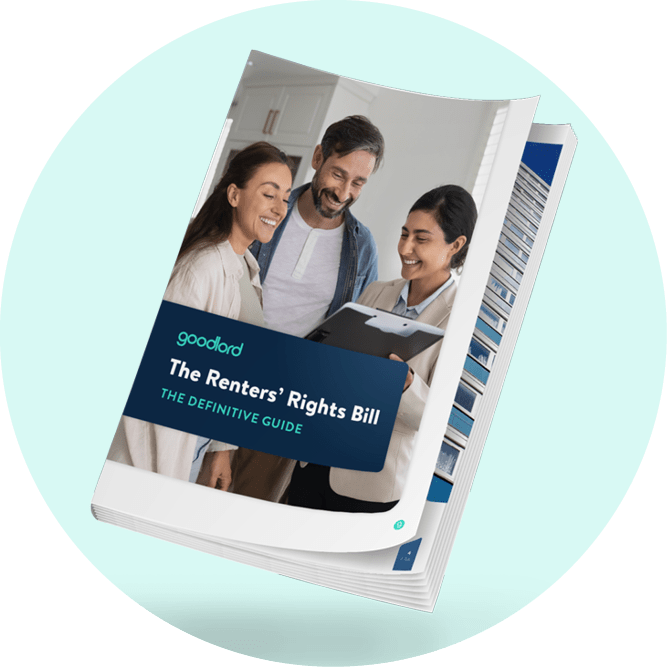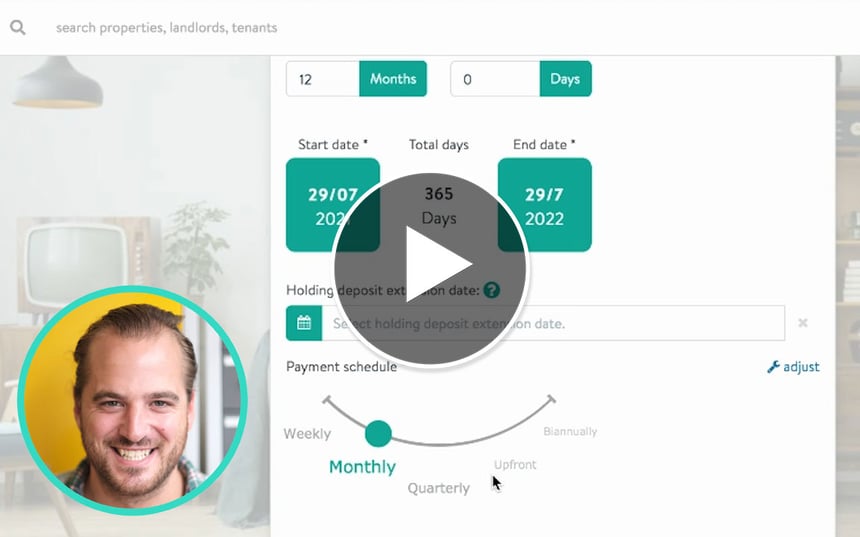Your guide to material information rules for property listings
National Trading Standards has published guidance for letting agents and landlords to improve material information in property listings.
The National Trading Standards (NTS) has published guidance to ensure letting agents and landlords improve material information in property listings.
The first guidance was released under Part A in May 2022, with Parts B and C following in November 2023. While Part A requirements (e.g. rent, deposit, and council tax/rates) should be on all listings, Parts B and C should not be "more than one click away".
All properties that are listed for rent should include material information in all advertisements - whether they are on a property portal, your agency website, your business' window, another third party website, or in printed material.
What is material information for a property listing?
For renting, material information is any information that a letting agent provides, which will help a customer make a decision. This can be in relation to a property - from arranging a viewing, putting in an offer, or any other part of the process.
Material information can be both positive and negative in nature, with National Trading Standards stating that "You should not avoid including information on a listing because you think it will deter interest or take longer to secure an offer."
What do letting agents need to do?
Letting agents must ensure that:
- You proactively request material information and details about the property
- You undertake verification checks to ensure your information is accurate (e.g. asking the landlord, checking against HM Land Registry, a Local Authority search)
- You update all property listings and interested parties as soon as material information has changed - including on property portals, the agency website, or anywhere else you may have advertised a property.
What happens if I don't disclose material information on a property listing?
Material information should be prominently and clearly displayed in the property listing and "should not be hidden, unclear or ambiguous". Letting agents who fail to properly disclose material information could be liable for making “a misleading omission”, which is an offence under the Consumer Protection from Unfair Trading Regulations 2008.
If you become aware of any listings that do not include the material information covered by Part A, you should update these as soon as possible. However, this does not mean that consumers are prevented from making complaints about incomplete or missing information from property listings, as this is already an established requirement under the Consumer Protection from Unfair Trading Regulations 2008.
Eventually, NTS' aim is that letting agents and landlords will not be able to list properties on portals without providing the required information.
Should EPC ratings be on property listings?
Trading Standards advises letting agents to remain compliant, all Energy Performance Certificate (EPC) ratings should be included on a property listing, unless there is an exemption.
What material information do letting agents need to provide under Part A?
Council Tax or domestic rates
In England, Scotland, and Wales, listings must include the council tax band. If the rent includes council tax, this should be this information should be included in the listing and the council tax band doesn't need to be displayed separately.
In Northern Ireland, if the tenant is responsible for paying rates, this must be made clear in the listing and the amount they'll be required to pay must be displayed. If the landlord is responsible for paying rates, the guidance also recommends making this clear in the listing.
Rent
The rent for the property should be listed as a numerical amount with the time period that it relates to, e.g. per calendar month. If rent is paid monthly, the equivalent weekly rental amount can be shown for information purposes, however, it must be made clear in the listing whether or not the rent can be paid weekly.
The rental amount displayed must reflect the nature of the occupancy and the price per tenancy. For example, in a multi-occupied property, like a student house share that is let on a single tenancy, the overall rental amount for the property should be listed. If you provide a comparative “per person” or “per room” rental amount, it must be clear in the listing what the overall price is when the property is fully occupied.
If a multi-occupied property is rented on a room-by-room basis, then the rental amount per room and associated occupancy should be listed, for example, whether it is a single or double.
If the rent includes bills, the listing should clearly state which bills are included. If the property portal doesn't include a field for this information, this should be included in the free text for the listing.
Holding deposit
If a holding deposit is required, you must ensure this is clearly stated on the listing and comply with any specific requirements in the devolved nations that apply in respect of the holding deposit amount, for example, the Tenant Fees Act 2019 in England and the Renting Homes (Fees etc.) (Wales) Act 2019 in Wales.
Just like the requirements for displaying rent, the amount of the holding deposit must reflect the nature of the occupancy. For example, in multi-occupied properties, the total holding deposit for the property should be listed. If you provide a comparative “per person” or “per room” figure, the full amount of the holding deposit must be clear.
If a multi-occupied property is rented on a room-by-room basis, then the amount of the holding deposit per tenancy should be listed.
Security deposit (tenancy deposit)
Details of the security deposit must be included on the listing. You must comply with any specific requirements in the devolved nations that apply in respect of the deposit amount, e.g. Tenant Fees Act 2019 in England.
Just like the requirements for the holding deposit and the rent, the deposit amount displayed must reflect the nature of the occupancy. For example, in a multi-occupied property, the total deposit amount for the property should be listed. If you provide a comparative “per person” or “per room” deposit amount, the full amount of the security deposit must be clear.
If a multi-occupied property is rented on a room-by-room basis, then the deposit amount per tenancy should be listed.
What material information do letting agents need to provide under Part B?
Part B covers information about properties that generally may need maintenance, repair, or some form of insurance cover.
Physical characteristics of a property
This includes:
- A listing should include an accurate description of the type of property - for example, whether it is a house or flat - and what floor the apartment is on.
- Outlining the materials used in construction. Tenants should generally understand the make up of a property, which is generally achieved through good photography.
The number and type(s) of room
The number and types of room should be in each property listing. Trading Standards also indicates that floor plans are an easier way to show this to a tenant, rather than written measurements. This should also factor in with any areas of the room affected by factors such as eaves.
Local authorities have different classifications of what constitutes a "bedroom", so this should be taken into account.
Utilities
It should be made clear if bills are included as part of the rental payment. Although not mandatory, the following information becomes important if the property is not connected to a mains supply, such as:
- A description of the electricity supply.
- A description of the water supply, and whether the supply is metered.
- The nature of sewarage - for example if septic tanks or cesspits will require emptying, and if the tenant or landlord needs to pay for this
- An accurate description of how the property is heated - including how it is charged, whether the tenant can control the provider or the heating
- The nature of broadband into the property - whether there is an exclusive supplier, such as on a new build estate. If there is no broadband infrastructure, this should be stated.
- Mobile signal and coverage, and any known issues
Parking
A listing should clearly state whether a property has parking, or if there are multiple options. Tenants should be made aware if they need to obtain a parking permit, and whether there is a cost involved to acquire one.
A letting agent should also list the location of the parking in relation to the property, and whether there are any disabled parking spaces.
What material information do letting agents need to provide under Part C?
Part C information may or may not be needed, depending on whether the property is affected. Letting agents may need to seek specific, expert advice before proceeding. Information may include:
- Building safety (e.g. unsafe cladding, risk of collapse, lack of emergency lighting, insufficient fire/smoke alarm systems)
- Restrictions and rights (e.g. lease restrictions, real burdens in Scotland, restrictive covenants, no pets, the ability to run a business from home)
- Flood and erosion risk (e.g. whether the property has flooded in the past five years, any sources of risk, and frequency of flooding, any known risk of coastal erosion)
- Planning permission and proposals for development
- Property accessibility and adaptations (e.g. step free access, level access shower)
- Whether the property is in a coalfield or mining area
This article is intended as a guide only and should not be construed as legal advice. For more information on material information guidelines, visit National Trading Standards.
Want the latest lettings new delivered straight to your inbox every week? Sign up to our mailing list and stay up to date.









